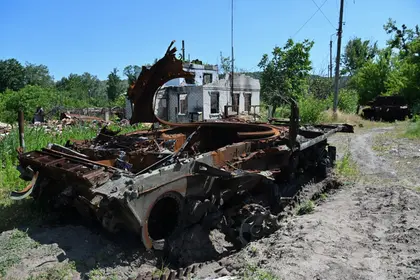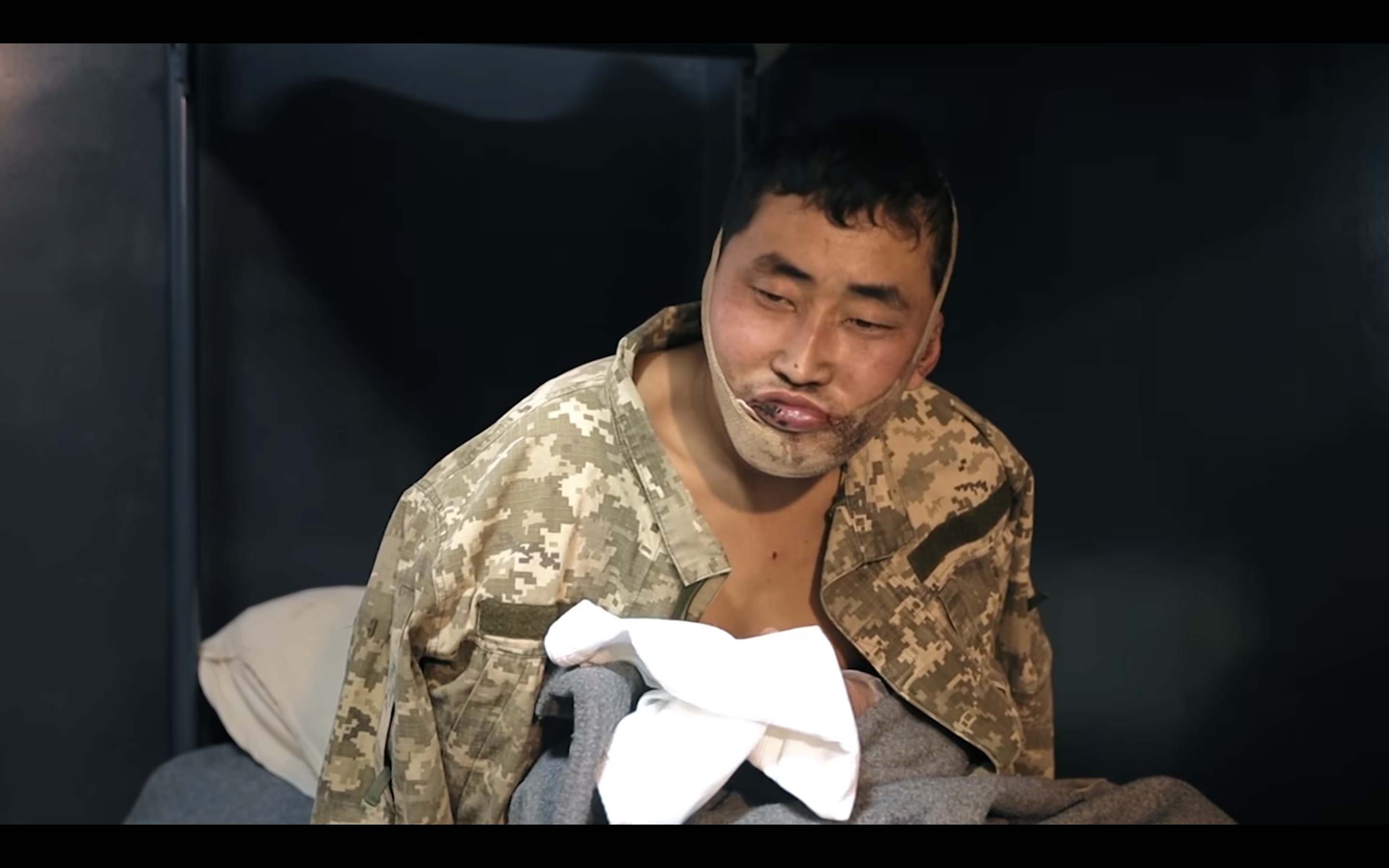A recent French in-depth survey of Russian Federation tank production and losses has concluded the level of losses is such that it will be unable to conduct major armored operations for years to come, and that its army could effectively run out of tanks in Ukraine in 2025.
The Marseilles-based “Institut Action Resilience (IAR)” used satellite images, published Russian sources, battlefield data, and research into Russian commercial archives to develop a detailed estimate it made public on Aug. 31.
- Obtain the most current Ukraine news articles released today.
- Get the newest Ukraine news reports as of today.
JOIN US ON TELEGRAM
Follow our coverage of the war on the @Kyivpost_official.
IAR’s conclusion is that Russian tank reserves are dramatically lower than the Kremlin would have outsiders believe. It contends that a realistic evaluation of Moscow’s tank stockpiles and its lack of industrial capacity to replace battlefield losses has resulted in a widening and impossible-to-close gap, the report found.
Wester analysts agree that any major Russian offensive in Ukraine would be expected to rely on its conventional tactic of massed tank assaults, but the IAR report suggests that Russia no longer has that option and the situation is worsening.
IAR figures show, that since the start of the war, Russia’s seven main tank repair and maintenance facilities have delivered 180-360 tanks of all types to the field. Western sanctions have effectively ended Russian capabilities to produce new tanks of any type and is currently used, without exception, to refurbish old Soviet armor.

Ukraine War Causes Cocaine Traffic Surge in Russia, Russian Media Reports
The institute’s evaluation was that Russia still holds a substantial stock of older tanks suitable for refurbishment, probably around 6,000 vehicles, which contradicts the assessment by other research groups, such as GlobalFirepower which put Russia’s total stocks at 12,566 vehicles.
#Ukraine: A concealed Russian tank (presumably a T-80BV) was destroyed by three FPV loitering munitions of the Ukrainian army in #Luhansk Oblast. pic.twitter.com/bhUGN780X0
— Polymarket Intel (@PolymarketIntel) September 11, 2023
The IAR findings, however, indicated that a significant percentage of these supposed tank reserves are mere hulks stored in open fields. Even more critically, Russia’s tank production chain suffers a huge bottleneck as it has only seven major bases capable of installing modern communications, optics and defense systems on even well-stored tanks.
According to the report, the whole of Russian industry is currently only delivering 390 tanks a year to combat formations. This is in stark contrast with Moscow’s official claims that just one of Russia’s tank factories, Uralvagonzavod, is producing 200 tanks a month and increasing production levels.
Ukrainian reports from the battlefield tend to confirm the IAR findings and bely the Kremlin’s bravado. Public statements by Ukrainian military sources, many interviewed by Kyiv Post, highlighted that since the spring Russian forces have rarely committed tanks into battle and when they do no more than five or six. Russian tank crews avoid moving into the open, preferring to hide behind hills and use their armored vehicles as indirect fire platforms, those accounts say.
The IAR report cited thermal sights for night vision observation and firing, have been standard on NATO tanks since the 1980s. IAR sees this as a definitive indicator that Russia is sacrificing tank quality for the sake of maintaining a flow of replacement vehicles. It says “While [prior to the war] T-72B3 and T-80BVM main battle tanks were initially fitted with Sosna-U visible and thermal multi-channel sights, models from November 2022 are now fitted with an old [Soviet era] generation 1PN96MT-02 sight with half the range.”
Armed Forces of Ukraine (AFU) units published combat video footage of Ukrainian tank and infantry units conducting nighttime assaults on Russian positions in late August and early September from the eastern Bakhmut and southern Orikhiv sectors. According to these accounts they did so without encountering Russian tanks opposing the attacks.
Estimates of Russian tank losses to date vary but, by almost any measure, they outweigh the replacements delivered by Russian industry by several factors. The independent monitoring group Oryx, using primarily open source photo and video, makes conservative estimate that Russia has lost a minimum of 130 tanks every month since the start of its full-scale invasion. On Sept. 16 the Ukrainian military has based its own estimates of Russian losses, using mostly combat drone video which it does not make public, at almost double that of Oryx and reports the losses to be 4,623 or more than 250 tanks a month.
Should Russian forces continue to suffer tank losses at the rate of the past eighteen months, the IAR report says that by early 2025 the number of Russian tanks on the battlefield field would drop to around 500 of all types, of which a quarter would be refurbished T-62 tanks produced in the 1960s or early 1970s.
“This scenario would therefore lead Russia to an almost total inability to deploy more than one armored brigade in a border theater of operations, [with the reality] that Russia [could not] secure its borders facing the Baltic countries, Finland, Kazakhstan and China,” the report said.
Were a major Ukrainian offensive in coming months to deliver results similar to that achieved by Ukrainian forces in the Kharkiv sector in October, “The entire [active Russian army tank] fleet [in Ukraine], of all models combined, would become a “symbolic” force at the end of 2023 with a total fleet of less than 250 tanks.”
Moscow would then be completely unable to conduct major armored operations and its tank units would need to operate in small battalion groups equipped with single types of tank, the report predicted.
The last relatively large-scale Russian tank assault was its failed attempt to break into Ukrainian fortifications around the Donbass Vuhledar in early 2023. AFU forces of the 72nd Mechanized Brigade reported destroying or capturing seven different Russian tank types. Russian assault groups led by elite naval infantry lost almost 80 tanks, equivalent to two months tank production, in a week of fighting, reports said.
“The Russian defense industry is still capable of producing tanks but at an insufficient rate to make up for the losses [and] a successful Ukrainian offensive would be catastrophic for the operational tank fleet,” the IAR report said.
“Continued degradation under Ukrainian military pressure has the potential to bring Russian ground forces to breaking point,” the report concluded.
CORRECTION: An earlier version of this article failed to state the number of tanks lost by "Russian assault groups led by elite naval infantry." The number was 80.
You can also highlight the text and press Ctrl + Enter










